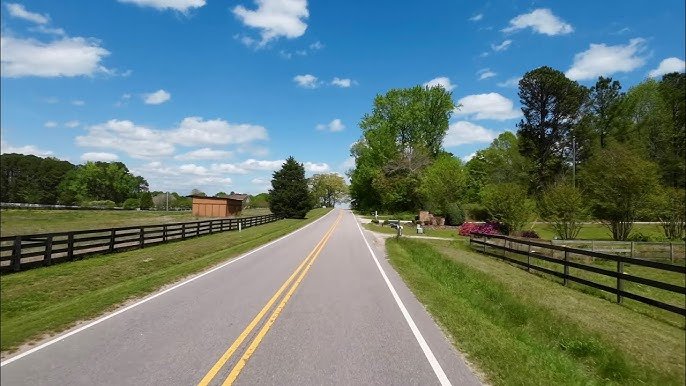Maintaining rural roads in the USA infrastructure is a crucial aspect of transportation that often goes unnoticed, but it plays a pivotal role in ensuring safe, efficient travel for residents, farmers, and travelers. Rural roads, which connect small towns and isolated regions to larger urban areas, face unique challenges due to weather conditions, traffic patterns, and limited budgets for upkeep. With proper maintenance practices, rural roads can remain functional and safe for extended periods, reducing the need for costly repairs and preventing accidents.
In this article, we will discuss best practices for maintaining rural roads in the USA. These practices will help local governments, engineers, and communities ensure the longevity and safety of rural roads while addressing various challenges they face.
Understanding the Importance of Rural Road Maintenance
Rural roads are vital to the economic and social fabric of rural areas. They support the transportation of agricultural products, connect residents to essential services, and allow businesses to thrive. Well-maintained roads improve accessibility, reduce travel time, and enhance the safety of all road users.
Given the limited resources and the challenges that rural areas face, such as low traffic volumes, seasonal weather conditions, and the lack of regular funding, it is essential to implement cost-effective strategies to preserve and maintain these roads. Regular maintenance and timely repairs are critical in ensuring these roads remain functional and safe for use.
Key Challenges in Rural Road Maintenance
Maintaining rural roads is not without its challenges. Below are some of the most common issues that affect rural road infrastructure:
- Weather-Related Damage: Rural roads often experience significant wear and tear from extreme weather conditions. Freezing temperatures in winter, followed by thawing in spring, cause freeze-thaw cycles that lead to cracks and potholes. Heavy rain can wash away road surfaces, causing erosion and flooding.
- Low Traffic Volume: Many rural roads see low traffic volumes compared to urban roads, which means there is less frequent monitoring and fewer resources for maintenance. Over time, this can result in deterioration that goes unnoticed until it becomes a major problem.
- Limited Budget: Rural areas often have smaller budgets allocated for road maintenance. This can limit the ability to perform necessary repairs and upgrades. To address this, efficient and cost-effective maintenance practices are essential.
- Geographic and Topographic Factors: Rural roads may be situated in remote locations with challenging terrain, such as hills, forests, or wetlands. These factors complicate both the maintenance and the construction of roads.
- Heavy Agricultural Equipment Traffic: Agricultural machinery such as tractors, harvesters, and trucks used to transport crops and goods often place additional stress on rural roads. These vehicles are large and heavy, leading to faster wear and tear on road surfaces.
Best Practices for Rural Road Maintenance
To combat these challenges and ensure that rural roads remain functional and safe, it is essential to follow a set of best practices for maintenance. These practices focus on both preventive and corrective measures and emphasize cost-effective solutions.
1. Regular Inspections and Monitoring
The first step in effective road maintenance is regular inspections. Rural roads should be inspected at least quarterly, or more frequently if weather conditions demand it. During these inspections, road engineers should look for signs of wear, such as cracks, potholes, rutting, and erosion. By identifying problems early, repairs can be made before they worsen and become costlier.
Technological tools such as drones, GPS mapping systems, and remote sensors can help provide detailed and accurate data during road inspections, even in hard-to-reach areas. These tools can assist in pinpointing issues that are not immediately visible and help prioritize maintenance tasks based on severity.
2. Timely Pavement Repairs
One of the most critical components of rural road maintenance is addressing pavement damage. Cracks, potholes, and surface erosion can all cause major safety hazards and should be repaired promptly. For minor issues, crack sealing and pothole patching can be performed to prevent water from entering the road structure, which can exacerbate the damage.
For more significant damage, a full resurfacing or overlay may be required. This involves applying a new layer of asphalt or concrete over the existing road surface, extending the road’s lifespan and improving ride quality.
3. Proper Drainage Systems
A proper drainage system is essential for the long-term durability of rural roads. Without effective drainage, water can pool on the road surface, leading to erosion, cracks, and other damage. Rural roads should have well-maintained ditches, culverts, and stormwater management systems to direct water away from the roadbed.
Regular cleaning and maintenance of drainage structures should be performed to prevent blockages. In areas prone to flooding, road engineers should consider installing additional drainage features, such as stormwater retention basins, to reduce the impact of heavy rains.
4. Roadway Stabilization
To prevent erosion and improve the structural integrity of rural roads, roadway stabilization techniques can be employed. This includes the use of stabilizing agents such as lime, cement, or bitumen to reinforce road surfaces. These stabilizers help increase the strength of the soil or gravel roadbed, making it more resilient to wear and reducing maintenance costs over time.
Stabilization techniques can also be used to improve the performance of unpaved roads, which are common in rural areas. Regular grading and re-compaction of gravel roads are necessary to maintain a smooth surface and avoid the formation of deep ruts.
5. Vegetation Management
Vegetation growth along rural roads can impede visibility, obstruct drainage systems, and contribute to the degradation of road surfaces. Regular trimming of trees, shrubs, and weeds should be conducted to maintain clear sightlines and reduce the risk of vegetation-related issues.
Additionally, herbicides can be used to control the growth of invasive species and prevent plant roots from penetrating the road surface. In certain areas, mulching or using ground covers can help stabilize the soil and prevent erosion.
6. Use of Sustainable Materials
Sustainability should be a priority when maintaining rural roads. Using recycled materials, such as reclaimed asphalt pavement (RAP), can reduce the environmental impact of road construction and maintenance. RAP can be repurposed to create new road surfaces, reducing the need for virgin materials and lowering maintenance costs.
Similarly, the use of green technologies like solar-powered street lights or eco-friendly road marking materials can improve road safety while minimizing environmental harm.
7. Collaboration with Local Communities
Collaboration with local communities is crucial in ensuring the effectiveness of rural road maintenance. Local knowledge and expertise can help identify areas that require urgent attention or improvement. By involving community members in the maintenance process, road maintenance programs can be more efficient and aligned with the needs of rural residents.
Public awareness campaigns can also help educate residents about the importance of road maintenance and the role they can play in preserving road quality. Encouraging responsible driving, reporting road damage, and participating in volunteer efforts can all contribute to the overall success of rural road programs.
Conclusion
Rural road maintenance is a complex and ongoing process that requires careful planning, timely repairs, and a combination of sustainable practices. By focusing on regular inspections, timely repairs, proper drainage, roadway stabilization, vegetation management, and the use of innovative materials, rural roads can be preserved and maintained for years to come.
Efficient maintenance strategies will ensure that rural roads continue to serve their vital role in supporting agriculture, connecting communities, and ensuring the safety of travelers. With the right approach, rural roads can remain functional, cost-effective, and safe for all users.










